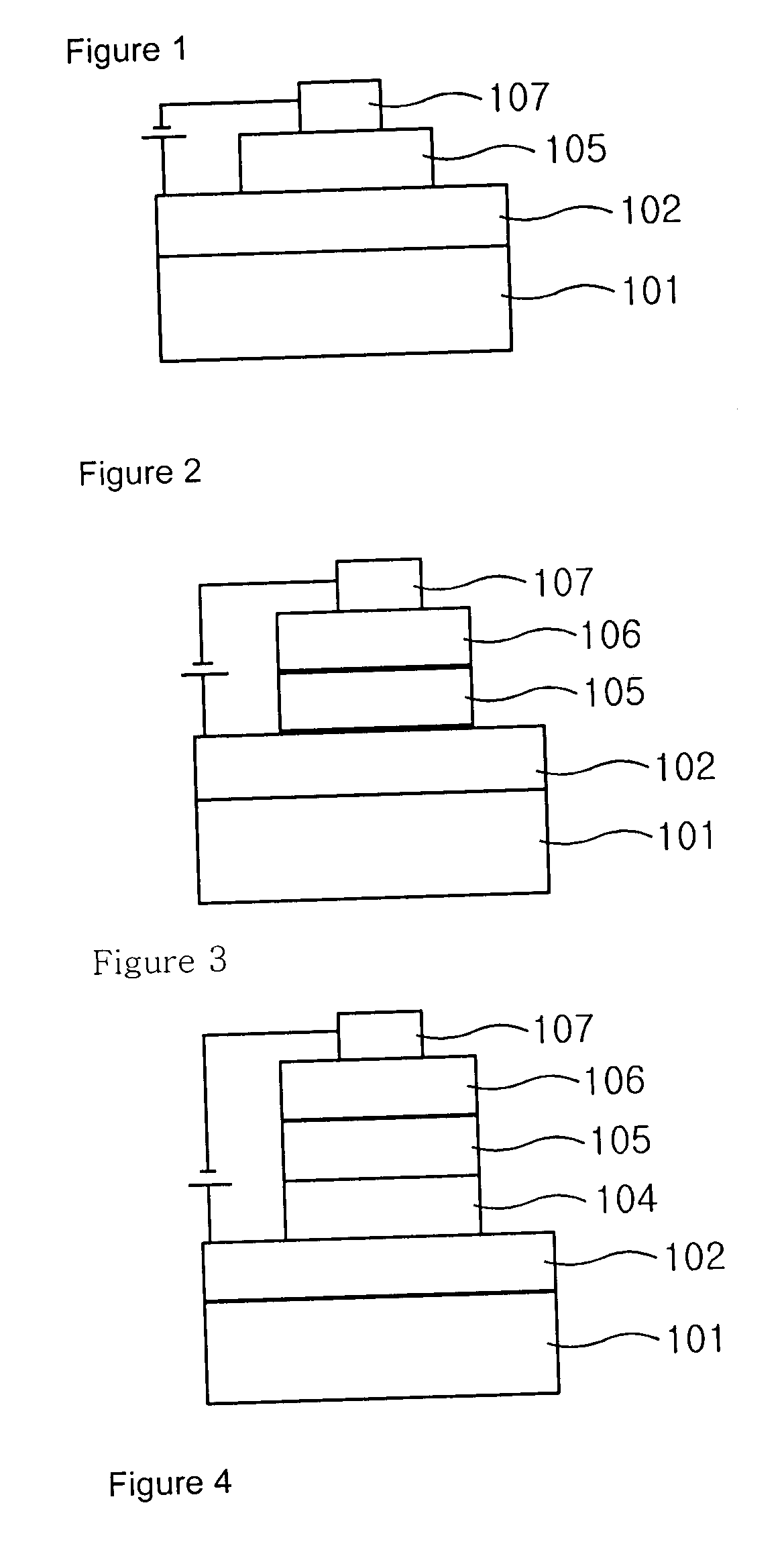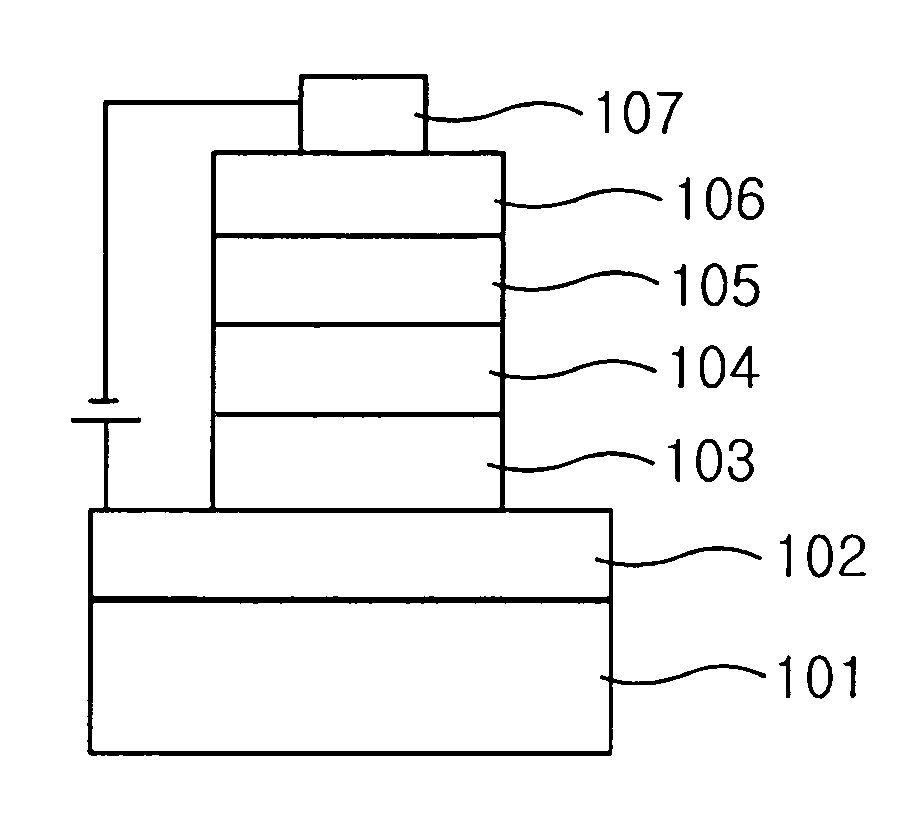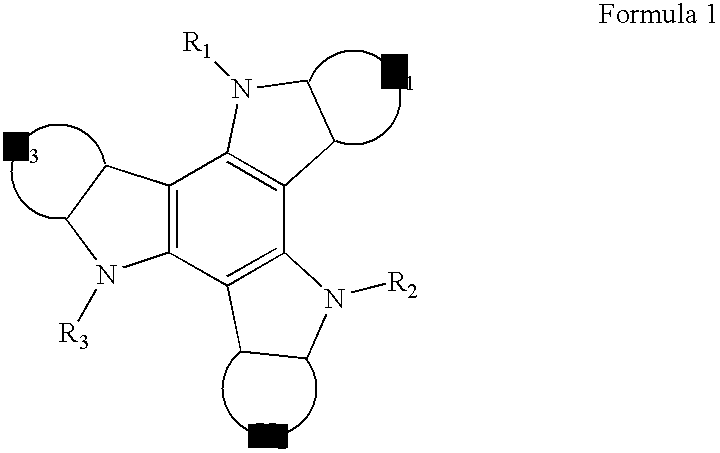Carbazole derivative and organic light emitting device using same
a derivative and organic light-emitting technology, applied in the direction of anthracene dyes, discharge tubes luminescnet screens, natural mineral layered products, etc., can solve the problems of short light-emitting lifetime, low durability and reliability, and low yield
- Summary
- Abstract
- Description
- Claims
- Application Information
AI Technical Summary
Benefits of technology
Problems solved by technology
Method used
Image
Examples
preparation example 1
[0074] Preparation of a compound of Formula 2-1
[0075] 0.13 g (1.36 mmol) of Na(t-BuO), 331 mg (0.03 mmol) of Pd2(dba)3, and 10 mg (0.05 mmol) of 2-(di-t-butylphosphino)diphenyl were added to a mixture of 1.2 g (3.4 mmol) of the compound of Formula 4 and 2.8 g (1.36 mmol) of iodobenzene in 70 mL of xylene, and reacted at 120° C. for 1 hour. After the reaction was finished, cooling to room temperature was conducted, and the precipitate was filtered, washed with water and ethanol, and vacuum dried. The resulting compound was dissolved in 80 mL of a THF solvent, and treated with acidic white clay to remove inorganic metals, such as Pd. The filtrate was concentrated and precipitated in ethanol. The precipitate was then vacuum dried (1.0 g, Yield=62%): Mp 357° C. (DSC); MS[M+1]+574.
preparation example 2
[0076] Preparation of the compound of Formula 2-2
[0077] The procedure of preparation example 1 was repeated to produce the compound of Formula 2-2 except that 3-iodotoluene was used instead of iodobenzene. (1.2 g, Yield=58%): Mp≧380° C., Tg 149.8° C. (DSC); MS[M+1]+616.
preparation example 3
[0078] Preparation of the compound of Formula 2-9
[0079] The procedure of preparation example 1 was repeated to produce the compound of Formula 2-9 except that 4-bromobiphenyl was used instead of iodobenzene. (1.5 g, Yield=56%):Mp 374.4° C. (DSC); MS[M+1]+802.
PUM
| Property | Measurement | Unit |
|---|---|---|
| carbon number | aaaaa | aaaaa |
| thickness | aaaaa | aaaaa |
| thickness | aaaaa | aaaaa |
Abstract
Description
Claims
Application Information
 Login to View More
Login to View More - R&D
- Intellectual Property
- Life Sciences
- Materials
- Tech Scout
- Unparalleled Data Quality
- Higher Quality Content
- 60% Fewer Hallucinations
Browse by: Latest US Patents, China's latest patents, Technical Efficacy Thesaurus, Application Domain, Technology Topic, Popular Technical Reports.
© 2025 PatSnap. All rights reserved.Legal|Privacy policy|Modern Slavery Act Transparency Statement|Sitemap|About US| Contact US: help@patsnap.com



